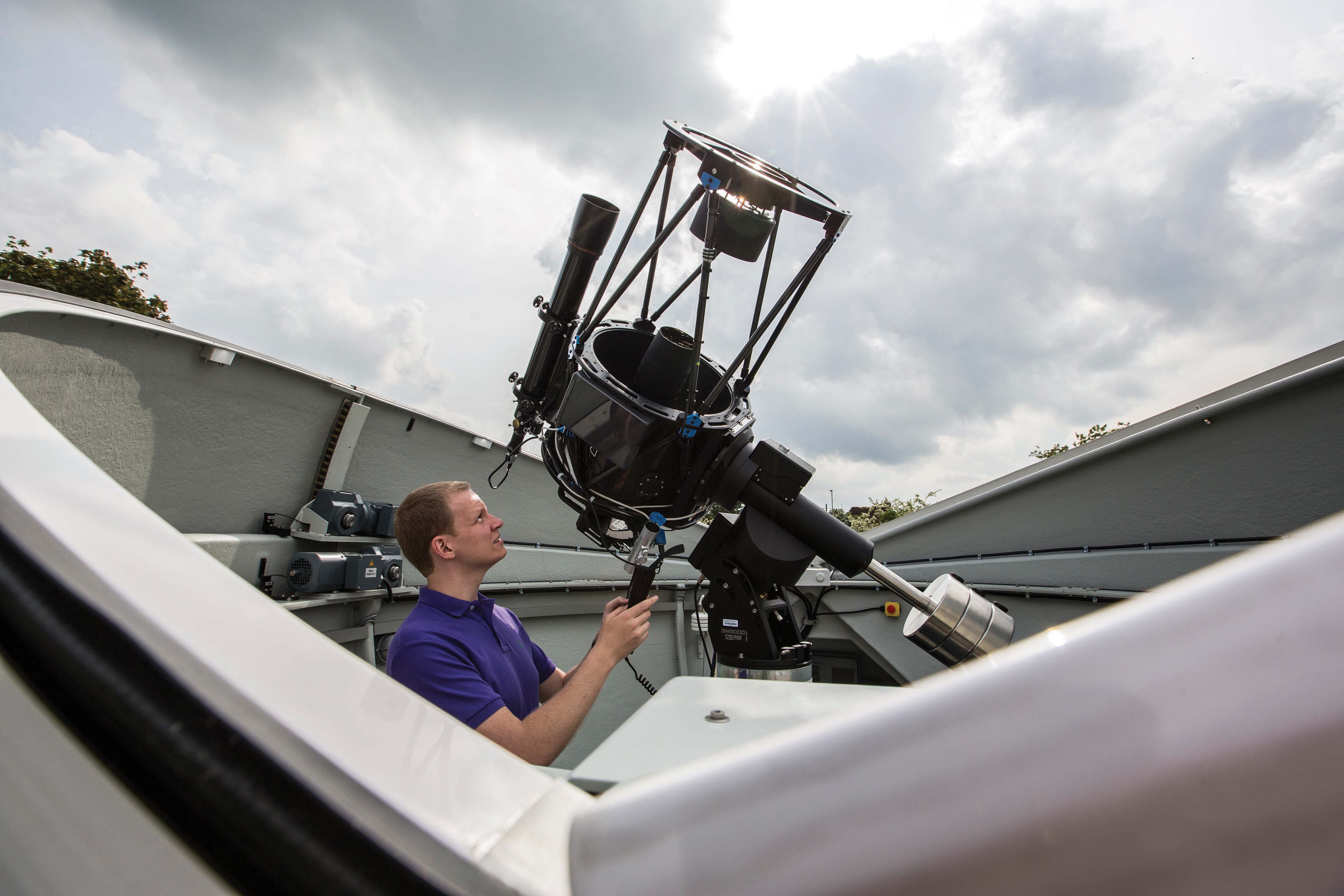Following on from this, pi-scaling is been used to scale up to solar system sizes, in order to make predictions on cratering in the solar system, and also more specifically for the Deep Impact mission recently commissioned by NASA. The Deep Impact mission will send a probe to impact on a comet, in order to find out the nature of the comet’s surface.
Craters in the laboratory
This image shows a typical crater in ice created in the laboratory. It was made by a 1.5 millimetre diameter stainless steel projectile travelling at 5.003kilometers per second. The crater has an average diameter of 110.1millimeters, a depth of 21.7millimetres and a volume of 60.8cubic centimetres.
Preliminary results
The following graphs show some preliminary results of how the projectile density affects the crater morphology for various projectiles:
As we can see from the graphs, there appears to be a power relation between the depth, diameter and volume of the crater and the projectile density, while there is no relation between the depth/diameter and projectile density.
Pi-scaling
Pi-group scaling is essentially a method of dimensional analysis, which allows the many parameters used in the pi-group values to be experimentally investigated individually, i.e. keeping the other parameters fixed. It was originally conceived by E. Buckingham in 1914, and was elaborated on by P. W. Bridgeman in 1949. As used by Melosh[7], and Lange and Ahrens[8], these parameters allow easier scaling from laboratory-sized impacts to solar system impacts due to their dimensionless nature. The following equations were used in the work:
The graphs below show the pi-values as they are plotted together, and this information will be used for predictions for the Deep Impact mission, as well as other crater prediction work.
Deep Impact
Deep Impact is the first space mission to probe the surface of a comet. In December 2004, the spacecraft will be launched to reach it’s target, Comet Tempel 1, in July 2005. The spacecraft will take images of the comet on it’s approach, before releasing a probe that will impact on the comet’s surface. The orbiter will observe the probe’s impact, recording data about the impact itself, the ejected material, and the structure and composition of the interior of the resulting crater. For more information, see the Deep Impact website.
